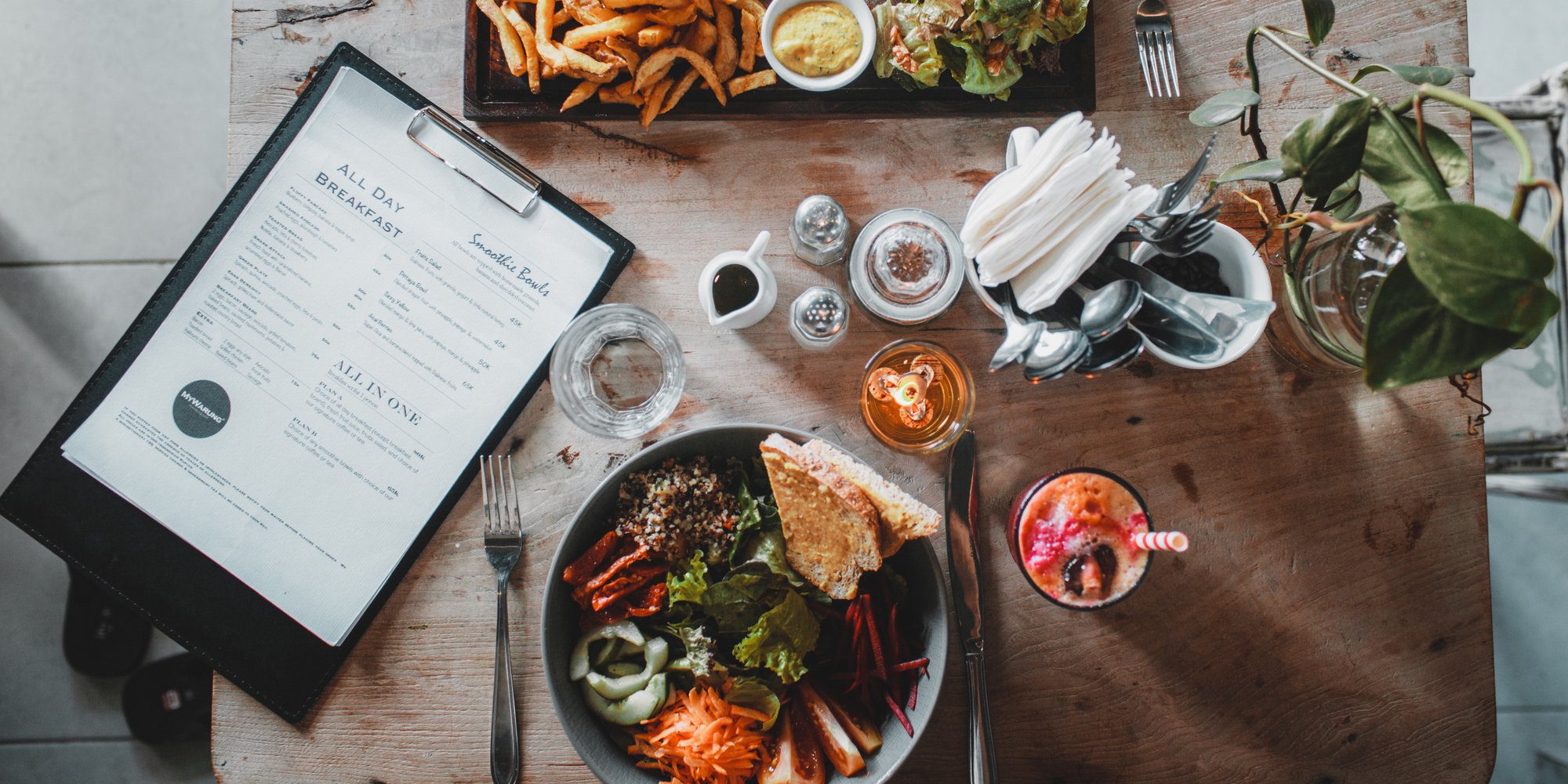Food brand marketing must-know tips for new restaurants
You're opening a restaurant – great! Now what? See how our top marketing tips & tricks can help your food brand or restaurant marketing plan succeed.
You’re set to open a restaurant. Congratulations! It’s an exciting time and, if you’re like most restaurateurs, you have hundreds of things on your ‘to-do’ list with a looming opening date. Marketing can often fall on the back burner.
Lack of time and marketing resources may seem like a setback. That’s why it’s essential to prioritize so you can create traction and efficiencies with the fundamentals in place. Here are the marketing must-haves to ensure your new restaurant marketing activities are off to a well-run start.
Undercooked plans? Here’s how to rescue them
As a veteran of the food brand marketing industry, we’ve found that restauranteurs who establish brand and marketing plans prior to launch will experience a smoother opening (and more long-term success) than those who don’t. But what if you’ve already opened your restaurant? It’s okay!
Even if you’re already in business, it’s not too late to consider how you’ll grow and evolve going forward. Read on to see how we’ve rescued undercooked brand and marketing plans for food brand marketing clients. And how you can implement these tactics in your own restaurant!
Your brand plan: your marketing bread & butter
A brand plan is the foundation for all marketing efforts in the future. Your plan should include a brand standards guide with, at minimum, the following information:
- Your primary and secondary audiences: Who are your most common customers?
- Your brand positioning: How is your restaurant different from the competition? What impressions do you want customers to take away from an experience with your brand?
- Your visual identity: How does your restaurant express itself with a distinctive logo, color palette and typeface choices?
We see too many restauranteurs move ahead with just a concept, logo and interior design. While these are essential expressions of your brand, creating a visual identity without the positioning and messaging is like dressing up a mannequin. You’ll have style with no substance, which can be easy to forget. Be sure to define your positioning to ensure a meaningful, authentic connection with your guests.
You may have a general understanding of these terms but if not, become comfortable with key branding elements that make up the brand plan.
How does a brand plan influence your restaurant? Great question! It shapes your customers’ entire perception; from the moment they decide to go out to eat, to their experience throughout the meal and even while they interact on social.
Now, let’s take a look at how your brand plan can be applied to all aspects of your restaurant.
The brand plan in action: Icing on the cake
Your brand isn’t just a logo, it’s the way your customers perceive your restaurant based on their experience. If you are consistent on every touchpoint, you work to build a cohesive and trustworthy image which in turn, will improve customer recognition and loyalty. It’s imperative to plan and organize to meet this challenge.
For example, use your brand guidelines documentation to ensure consistent use of typography and color on your menu, signage and on social media. This can be especially handy when using a variety of resources – agencies, freelancers or coordinators – to create marketing materials. Make sure they are armed with this documentation as a pre-requisite to doing work with you. Purposeful consistency will build awareness and establish credibility.
Your opportunity to provide a consistent brand experience doesn’t end there. Brand positioning defines your tone of voice, or ‘brand voice.’ This is the way you communicate with the public – it includes your emotional tone and the words you chose. Are you playful and use humor to connect or are you serious and calm? Empower your team to maintain the same tone when they communicate on the restaurant’s behalf.
Other touchpoints like menu updates, new-hire communication and all other copy need to sound like they come from the same place.
Below is an example of typographic brand essence statements we created for Boom’s Pizza. A similar tool will help inspire and teach designers how to visually express your brand assets consistently.

Not only does your brand plan help execute all the above, but it lays the groundwork for your marketing plan. Read on to see how.
Your marketing plan: the greatest thing since sliced bread
Marketing a restaurant is like feeding a beast: it’s always hungry and never satiated. Why? Oversaturation in the market. Customers have many options, so you need to stay top of mind to be considered. When Sally asks her friends, “Hey, where should we go for dinner tonight?”, if someone in the group just saw a memorable social post, you’re likely to be in the consideration set.
The only way to stay relevant in a world flooded with food and restaurant concepts is to have a clear marketing strategy. And in an industry where reputation is everything, your brand and message should be 110% focused 100% of the time.
There are endless paths to choose when it comes to restaurant marketing. This makes it difficult to figure out where to start. Read on to see your marketing plan’s applications that are your springboard for success.
Your marketing plan: the greatest thing since sliced bread
Here are our tried-and-true tactics that we use to create results for our food branding clients as part of their marketing plan.
Optimize content for search: Make sure you’re visible online when hungry customers search for restaurants. This is as simple as adjusting the words you use on your website! To find out what keywords drive results, try these tactics:
- Competitor Research: Evaluate what the competition does on their websites. Look for repeated terms like the city, the type of establishment (fast-casual, fine dining, etc.) or food served. Make sure your web copy is as descriptive as possible!
- Search Engine Results: Gain keyword inspiration by typing your restaurant type or the food you serve into a search engine like Google, then evaluate the results. The first part of a Google search result – known as the title tag – will give you a clue into keywords that other restaurants use. You’ll want to include similar keywords on your website to turn up in search results. You can use free tools like Yoast for simple do-it-yourself keyword implementation that will help your organic ranking.
Once armed with a new list of keywords, add them throughout your restaurant website – especially on the home page.
Create a social media response plan: Like our friend Sally, if someone is on their lunchtime scroll through Instagram and happens across your account, it’s more likely they’ll consider your restaurant for dinner that night.
Another social media avenue to manage are reviews. As you already know, they can alter customers’ impression of your restaurant. It’s best practice to respond to comments (both good and bad) on social media posts to maintain a position of authority on your channels. Be sure to thank users for their nice comments!
Here’s how we would respond to a positive review: “Thank you for your kind words! We’re so glad you had a great experience and hope to see you again soon.” Feel free to tweak this as necessary to fit in with the review you’re responding to.
For challenging reviews, never delete them unless they are inappropriate or use offensive language. Instead, offer to continue the conversation off line. Use this template for a not-so-positive review: “Hi *insert name*, we’re so sorry to hear about *insert details about their experience*. We work hard to make your visit with us great, so we’d like to know more about the situation to improve our performance. Please email us at info@yourrestaurant.com.” Simple and to the point without becoming defensive is the goal here.
Critical comments or reviews can be hard to take in, but when you keep a cool head, you can respond kindly.
Create and manage business platforms: You can also find and manage reviews on sites like Yelp, TripAdvisor, and Google. Be sure to monitor these on a regular basis! The response templates above can also be used for web reviews.
Build your owned database: Engage with customers using newsletters. On your website or in the restaurant, include a spot where customers can opt-in to receive regular emails. Weekly, quarterly or whenever you have good news to share – the choice is yours.
Our food brand marketing clients find that email newsletters help their customers feel like they’re in the know with advance announcements, loyalty programs and exclusive updates.
Support your community: Once your brand plan is in place, you’ll have a good idea of who your ideal customers are. Sponsorships, philanthropic events or collaborations that align with your audience’s interests and habits helps you reach more potential customers.
Note that community organizations have a tendency to over ask. Establish your annual giving budget upfront and align your efforts with organizations and causes that create positive exposure for your restaurant and support your brand position.
Share your story through public relations: Awards and recognition are great and may lead to an uptick in restaurant traffic, but fame is fleeting. A more sustainable way to get people through the door is to engage with local and regional media outlets. Think: the town paper, radio stations, morning news shows and podcasts.
Every time you get covered, make the most of it and share links to the segments or articles on your social and also add them to a frequently updated list of “News & Reviews” on your website.
Create a list of your region’s top food reviewers, morning show hosts, social media influencers and podcasters. Be sure to include them on your newsletter list and email them often with updates to stay top of mind.
Food for thought
We covered a lot of ground in this article! Food brand marketing is complex, but with the right partner, you see the value of your marketing investment. To summarize key deliverables from your brand plan and marketing plan, your marketing partner should provide you with these action items:
- Brand standards guide with all logo and typeface files organized in one easy-to-access place.
- List of search terms that appear in your website titles and copy to ensure search engines find you.
- Social media community communications plan so there is a set protocol and template for review response.
- Newsletter best-practices, guidelines and templates.
- Public relations support that helps you earn media coverage.
Simply stated, opening a restaurant is hard. That’s why now, more than ever, new restaurant owners must carefully contemplate their marketing choices.
Before you decide to DIY your marketing plan, consider finding a seasoned (pun intended) partner to craft a customized marketing and growth plan for your restaurant concept. Explore all of our marketing services to see how we can help you cook up success.
Sign up for the monthly Muse newsletter to see how we structure our email communications and our best practices for email content creation!
About the Author
Kristen Pokorny is a Creative Director at Muse and leads our visual communications department. She possesses a range of creative design skills including creating within existing brand guidelines to building ideas from the ground up. With over 15 years of agency experience, she's worked with both large, global brands and small businesses. She’s well versed in the entire creative process, from sketch phase and lettering to final production.
More Good Reads

How a Messaging Toolkit Enhances Marketing Efficiency for Food Brands
An experienced food marketing agency helps your food brand leverage storytelling for consistent strategic communications across teams and regions.

Modern Wellness Customer Personas: 2024
How to target different wellness motivations of consumers in 2024.

